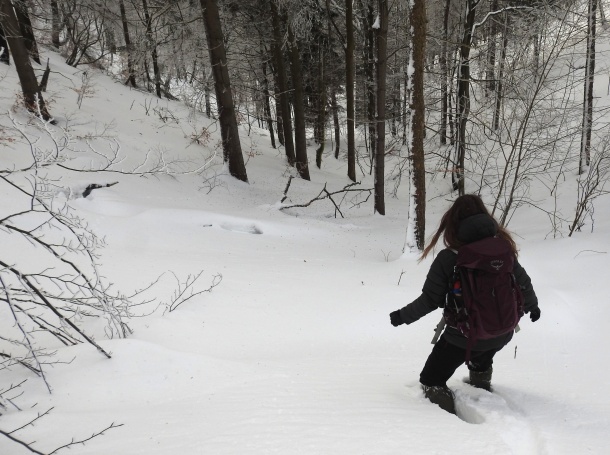Snow tracking for otter DNA

From high up in the mountains, we walked downstream looking for their tracks in the snow and their droppings, known as spraints, and “jelly”. Jelly is an excrement of the anal gland. The spraints are used by otters to mark their territories and can be found in exposed areas along the stream like stones or roots or under bridges. These spraints contain prey bones, fish scales and other remnants. These remnants are used to find out what otters are consuming. But what we really want to get is their DNA. How is it possible? In these spraints, there are cells from the intestinal wall, perfect for extracting DNA from. But, don’t get too excited. It is a laborious method; the otter DNA has to be separated from everything else but even then, the DNA is often damaged because of what it is in. Therefore, we try to collect these spraints when they are as fresh as possible. You may ask why do it now with so much snow and ice?! Well, initially, the cold weather can help preserve the samples and the precious DNA hidden inside and secondly, in snow you can see immediately if the otter has visited the area in the last days or not. This time, however, there was a little too much snow up in the mountains, so whilst it was beautiful it was quite challenging!
So why do we want otter DNA in the first place?
One of the aims in our current otter project is to collect genetic samples form the individuals living in the Ore Mountains, from both sides of the border to determine their origins. We want to know whether otters have come from Saxon ponds or from the South Bohemian, how they are moving around in this area and identify potential bottlenecks.
Otters began to return to northern Bohemia between 2006 and 2011, but currently occur at low densities throughout the territory. The area of the Ore Mountains is heavily influenced by coal mining and the streams have been significantly altered due to this. For the otter this means there are now a number of impassable barriers.
Therefore, it is important for the local population of otters to know where they came from, how they can move in the local landscape, whether and where the ridge of the Ore Mountains passes.
We are going to use state-of-the-art methods to analyse the data and we will track the links using genetic analysis. We are taking 40 samples from each of the potential source populations and tissues from otters found killed on the roads in recent years be analysed. We do not, however, have such samples from the Ore Mountains and this is the reason why we are collecting samples now. We want to understand the connections between the Czech and Saxon otter populations and ensure their long-term survival. We are working on this project with the Saxon AG Naturschutzinstitut Region Dresden eV who are also collecting samples on their side of the border.


